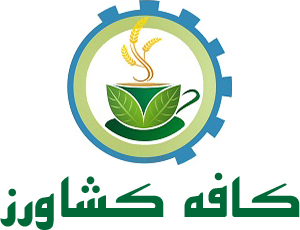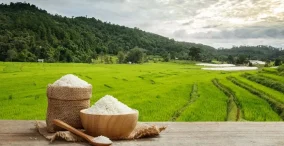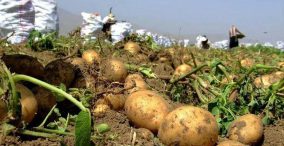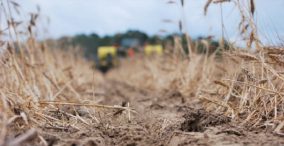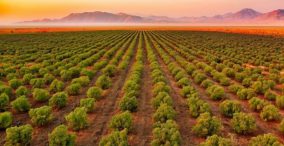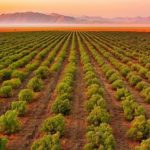Soil temperature is representative of the earth’s temperature regime in each region like Iran, which is considered as one of the important indicators in climate change assessment due to the rapid response to environmental changes.
This parameter is one of the important variables in the studies of hydrology, agricultural meteorology and climatology, considering various factors such as topography, sunlight, air temperature, soil moisture level, soil type and thermal characteristics. It depends on heat capacity, thermal conductivity coefficient and specific heat.
Estimation of soil temperature is very important because it is a key parameter that is used in many related fields.
For example, the energy balance on the surface of the earth occurs between the two key components of air temperature and soil depth temperature, soil temperature changes in the first place from radiation and the exchange of latent and sensible heat on the surface and heat transfer in soils with different characteristics. It takes effect.
Therefore, soil temperature and its changes at different depths are unique parameters that help to understand surface energy processes, regional environment and climatic conditions.
Studying the temperature of soil depths is very important from the point of view of agricultural meteorology and other environmental bio-activities, so that at different depths, the soil has different temporal and spatial behavior.
Since agricultural and garden plants are planted at different depths, it is necessary to know the temperature rate at different depths of the soil, especially in the upper layers up to 30 centimeters according to the type of plant and their biological zero. Any plant, including seeds and seedlings, can be grown at some time It should enjoy a favorable growth that benefits from agricultural principles.
The most important principle in this context is the soil temperature, which varies according to plant species.
Soil temperature shows the heat regime of the earth in a place and its quick response can be an index to show climate change in a region. Knowledge of the mean temperature of the soil over a period of time is considered as an appropriate measure to show the exact amount of climate change.
The increase in soil temperature due to global warming can increase risks such as drought through Increasing the water requirement of agricultural products during the plant growth period.
have a negative effect, also the increase in soil temperature will have various consequences, such as the increase of evaporation from the soil surface and soil salinity in fertile areas, which can lead to a decrease in soil performance and failure in plant growth.
Various researches have been carried out in the study of soil temperature, and according to the data and the environmental conditions of the study area, they have reached various findings.
The identification of the daily soil temperature trend in Northeast Iran from 1993 to 2016 has been done. In many research stations, a partial negative trend has been observed in the first half of January and the second half of December.
This process has increased with the increase of soil depth. In the hot months of the year, especially from April to the end of August, the trend of soil temperature has been positive and significant.
Freezing effect
Melting and freezing is one of the common weather phenomena in high latitudes. Proper understanding of the relationship between air temperature and soil depth temperature and the difference in the values of these two variables at high latitudes can be very useful in the accurate diagnosis of melting and freezing conditions. In the detection of melting states And freezers are suggested.
Researches about soil temperature in Iran have also been done for some regions. Bahir and Kemali investigated the relationship between soil surface temperature and lower soil levels in Borojan station. The results of their investigation have clarified the behavior of temperature in terms of penetration speed and its fluctuations from the surface to a depth of one meter.
Also, the estimation of the depth of the glaciers by using the relationship between the air temperature and the temperature of different soil depths in Razavi Khorasan province has shown that the American method in all the stations has given the depth of the glaciers more than the actual value, while the methods Finnish and Norwegian are the best respectively They have presented the depth of glaciers.
Estimation of soil temperature using other climatic parameters in a period of 15 years has shown better performance of fuzzy logic method than regression.
Examination of soil temperature in Kermanshah station has shown that the minimum temperatures reach a certain depth of the soil earlier than the maximum temperatures, in addition to the reduction of the annual and night-time fluctuations towards the lower depths of the soil.
. The results showed that by reducing the depth of water in the soil, the temperature of the soil becomes colder, and the reduction of waterlogging to a depth of 10 centimeters is significantly effective in cooling the environment.
Conclusion
In this research, the soil temperature changes in Iran at the depths of 5 to 30 centimeters have been investigated with the aim of identifying the temporal and spatial behavior of temperature throughout Iran. For this purpose, the soil temperature data of 150 meteorological stations of Iran have been used.
The results showed that there is a direct relationship between the increase and decrease of soil temperature throughout the year and the coefficient of its daily changes. The positive trend of temperature in both summer and winter seasons has been widespread throughout Iran.
In the summer season, strong trends with 99% certainty are more abundant in the mountainous regions, while in the winter season, the stations located in the southern half of Iran experience the most positive trends in soil temperature at different depths. are classified
Examining the values of the temperature trend shows that the trends higher than 1 degree Celsius are mostly seen up to 20 cm soil depth. The increasing trend of soil temperature in the winter season shows more spatial expansion, which indicates the increase of annual minimum temperatures, and in general, it shows the increasing trend of soil temperature in Iran in the long term.
Resource
Masoud, Moradi, Golizadeh , Mohammadhosein and Maisam Rahmani; Temporal and spatial analysis of the maximum temperature of soil depth in Iran, Journal of Spatial Analysis of Environmental Hazards.
